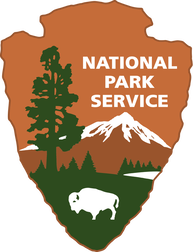Manzanar National Historic Site
Baseball Field Reconstruction
Baseball Field Reconstruction
|
National Historic Landmark
1985 National Historic Site 1992 Park Size 814 acres Annual Visitors 105,000 Park Fee none Superintendent Jeremy Scheier Park Partner Sierra Forever Location Inyo County, CA |
Manzanar National Historic Site preserves and tells the stories of Japanese-American incarceration during World War II. Visitors to the park come across a simple sign saying "baseball fields" in front of an expanse of dirt and scraps of chicken wire once used as back stops. This is a huge missed opportunity because the story of baseball at Manzanar is one of its most deeply touching. Japanese Americans, labelled "enemies of the state," continued to enjoy the everyday American game of baseball. This speaks loudly of their resilience and the injustice of their incarceration. Over 120 baseball and softball teams divided into twelve leagues played year-round within the bleak and dehumanizing camp.
A grant from The Fund for People in Parks and the Friends of Manzanar to rebuild the baseball field, complete with bleachers and announcer's booth, will enable the park to offer visitors a powerful image of life at Manzanar. An educational display on the site will add context. The area will be archaeologically excavated during the work, possibly uncovering new objects. No grass will be planted, keeping this a dirt field, as it always was. Ceremonial games will be played on occasion, allowing for reconciliation and remembrance. In October 2024, the backstop and bleachers were completed and the first ceremonial games were played on the field by members of the Japanese American baseball community. The announcer's booth and other elements will be completed in 2025. Project Cost: $47,121 Project Begun: 2023 The Fund for People in Parks: $41,754 National Park Service: $5,367 A memorial to Manzanar without its baseball diamond is like the Pledge of Allegiance without the flag...baseball was perhaps one of the few aspects of the lives they'd led prior to incarceration that they were allowed to keep with them after everything else had been taken away. The inclusion of a diamond might achieve what reparations alone couldn't facilitate: healing." |




